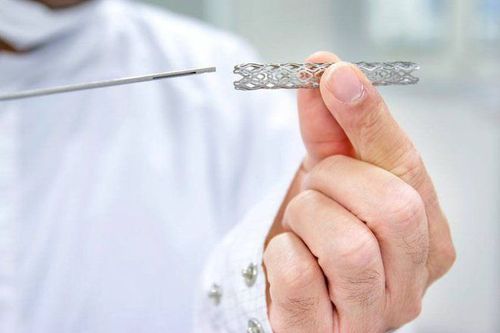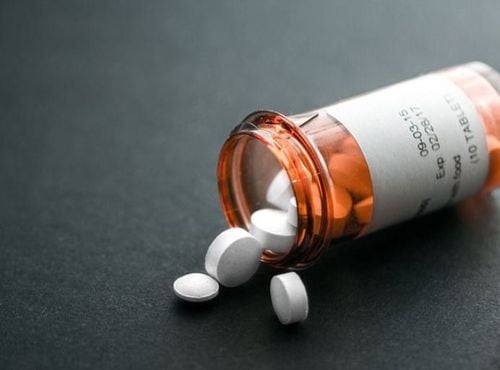This is an automatically translated article.
The article is professionally consulted by Master, Doctor Cao Thanh Tam - Cardiologist - Cardiovascular Center - Vinmec Central Park International General Hospital.Atherosclerosis is an extremely dangerous disease because people with the disease in the early stages almost have no symptoms until the disease has become severe. Therefore, the disease can progress silently and is the cause of many serious complications such as heart attack, myocardial infarction, cerebral stroke... even death.
This disease is completely curable. However, in order to be able to effectively prevent and treat the disease, it is advisable to have regular health check-ups and combine it with maintaining a healthy lifestyle.
1. Diagnosis of atherosclerosis
During the physical exam, your doctor may find signs of narrowed, dilated, or hardened arteries, including:
● Weak pulse or narrowed arteries
● Decreased blood pressure
● Listen with a stethoscope for arterial murmurs
Based on the results of your physical exam, your doctor may recommend one or more tests to diagnose atherosclerosis , including:
● Blood tests:
Lab tests can detect increased levels of cholesterol and blood sugar that can increase the risk of atherosclerosis. For this test, the person will not eat or drink anything but water for 9-12 hours before the blood test. The doctor will inform the patient in advance if this test is performed.
Doppler ultrasound:
The doctor may use a special ultrasound device (Doppler ultrasound) to measure the velocity of blood flow at various points along the arm or leg or any possible blood vessels. surveyable. These measurements can help your doctor assess the extent of any blockages, as well as the rate of blood flow in the arteries.
● Ankle-brachial index:
This test can tell if you have atherosclerosis in your peripheral arteries. Your doctor may compare your ankle blood pressure to your arm blood pressure. This method is called the ankle-brachial index, it shows an abnormal difference in blood pressure at two measurement sites, which can indicate peripheral vascular disease, which is often caused by fibrosis. arteriosclerosis.
● Electrocardiogram (ECG):
An electrocardiogram records electrical signals as they travel through the heart. An ECG can often reveal evidence of a previous heart attack. If signs and symptoms occur most often during exercise, your doctor may ask you to do a stress test by walking on a treadmill or cycling while an ECG recording electrode is attached. .
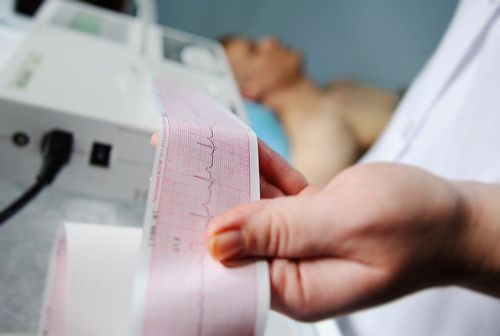
● Stress test:
A stress test, also known as a stress exercise, is used to gather information about how well the heart is working during physical activity. Because exercise makes your heart beat harder and faster than most everyday activities. Stress testing can reveal problems in the heart that might not be noticed otherwise. The stress test is usually walking on a treadmill or riding a stationary bike while your heart rate, blood pressure, and breathing are monitored.
Cardiac catheterization and coronary angiography:
This test can detect narrowed or blocked coronary arteries. A contrast material is injected into the arteries of the heart through a long, thin tube (catheter) that is inserted through an artery, usually in the leg or wrist, to arteries in the heart. As contrast material fills the arteries, the arteries will show up on X-rays, showing areas of narrowing or blockage.
● Other imaging tests:
The doctor may use ultrasound, computed tomography angiography (CTA), or magnetic resonance angiography (MRA) to check the arteries. These tests can often show hardening and narrowing of the large arteries, as well as aneurysms and calcium deposits in the artery walls.
2. Treatment of atherosclerosis
Lifestyle changes, such as eating a healthy diet and exercising, are often the most appropriate treatment for atherosclerosis. In more severe cases, medication or surgery may also be recommended.
2.1. Medications Various medications can slow or even reverse the effects of atherosclerosis. Here are some common drug options:
● Cholesterol medications:
Medications to help lower low-density lipoprotein (LDL) cholesterol - the "bad" cholesterol, which can slow, stop, or even reverse the deposition of cholesterol. deposition of fatty deposits in the arteries. At the same time, increasing high-density lipoprotein (HDL) cholesterol - the "good" cholesterol - can also help with the treatment process.
The doctor can choose one of the right cholesterol medications for each patient, including drugs called statins and fibrates. In addition to lowering cholesterol, statins also have the additional effect of stabilizing the lining of the heart arteries and preventing atherosclerosis.
● Antiplatelet drugs: Your doctor may prescribe an antiplatelet medication, such as aspirin, to reduce the chance of platelets clumping in narrowed arteries, forming blood clots and causing blood clots. additional congestion.
Beta-blockers: These drugs are commonly used for coronary artery disease. They lower heart rate and blood pressure, reduce the heart's demands, and often relieve symptoms of chest pain. Beta blockers reduce the risk of heart attack and some heart rhythm problems.
● Angiotensin-converting enzyme inhibitors (ACEIs): These drugs may help slow the progression of atherosclerosis by lowering blood pressure and producing other beneficial effects on the arteries of the heart. ACE inhibitors can also reduce the risk of recurrent heart attacks.
Calcium blockers: These drugs lower blood pressure and are sometimes used to treat angina.
● Diuretics: High blood pressure is a major risk factor for atherosclerosis. Diuretics can help lower blood pressure.
● Other medications: Your doctor may recommend certain medications to control specific risk factors for atherosclerosis, such as diabetes. Sometimes specific medications are used to treat symptoms of atherosclerosis, such as leg pain during exercise.
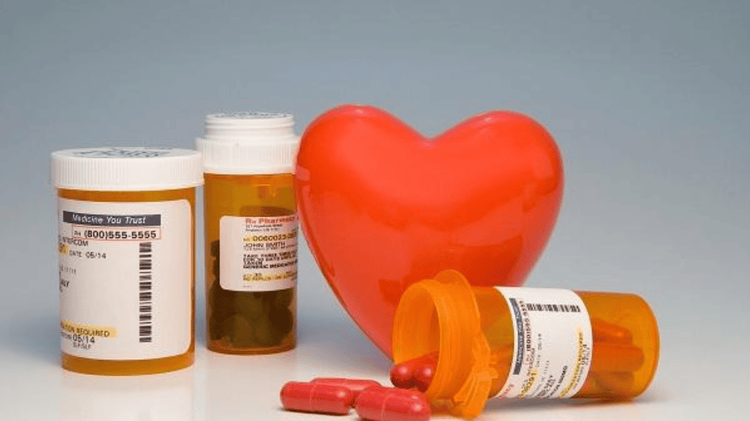
2.2. Surgery Sometimes aggressive treatment is needed for atherosclerotic disease. If there are severe symptoms or blockages that threaten the survival of muscle or skin tissue, then specialist management with surgery is required. The procedure includes:
● Angioplasty and stenting:
In this procedure, a doctor inserts a long, thin tube (catheter) into a blocked or narrowed part of an artery. A second catheter with a deflated balloon on its tip is then passed through the catheter to the narrowed area. The balloon is then inflated, compressing the deposits against the artery wall. A mesh tube (stent) is usually left in the artery to help keep the artery from narrowing again.
● Endometrial ablation:
In some cases, fat storage must be surgically removed from the narrowed artery wall. When the procedure is done on the arteries in the neck (carotid arteries), it is called endoscopic carotid endarterectomy.
Thrombolytic treatment:
If there is an artery blocked by a blood clot, your doctor may use medicine (fibrinolytics) to dissolve the clot to break it up.
● Surgery:
The doctor can create a graft path using a vessel from another part of the body. This allows blood to flow around the blocked or narrowed artery.
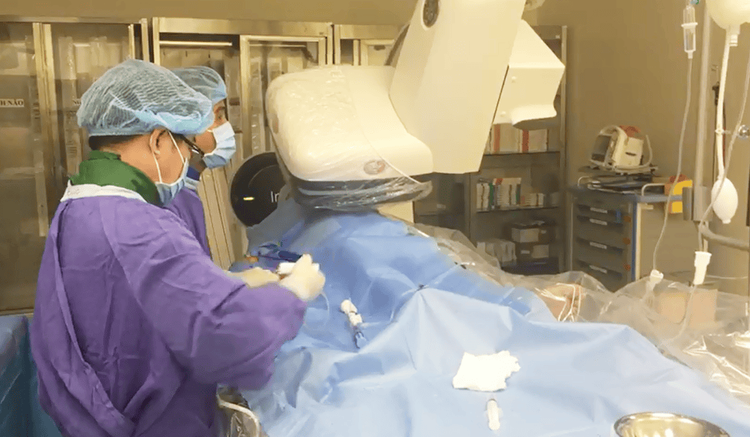
3. How to prevent atherosclerosis?
Lifestyle changes can help prevent as well as treat atherosclerosis, especially for people with type 2 diabetes. Helpful lifestyle changes include:
Eat a healthy diet that is low in saturated fat and cholesterol. Avoid fatty foods Add fish to your diet twice a week Get at least 75 minutes or 150 minutes of moderate exercise each week. Quit smoking Lose weight if you are overweight or obese Avoid stress Manage stress Treat conditions associated with atherosclerosis such as hypertension, high blood cholesterol and diabetes.
If you have unusual symptoms, you should be examined and consulted with a specialist.
Please dial HOTLINE for more information or register for an appointment HERE. Download MyVinmec app to make appointments faster and to manage your bookings easily.
References: mayoclinic.org; healthline.com









